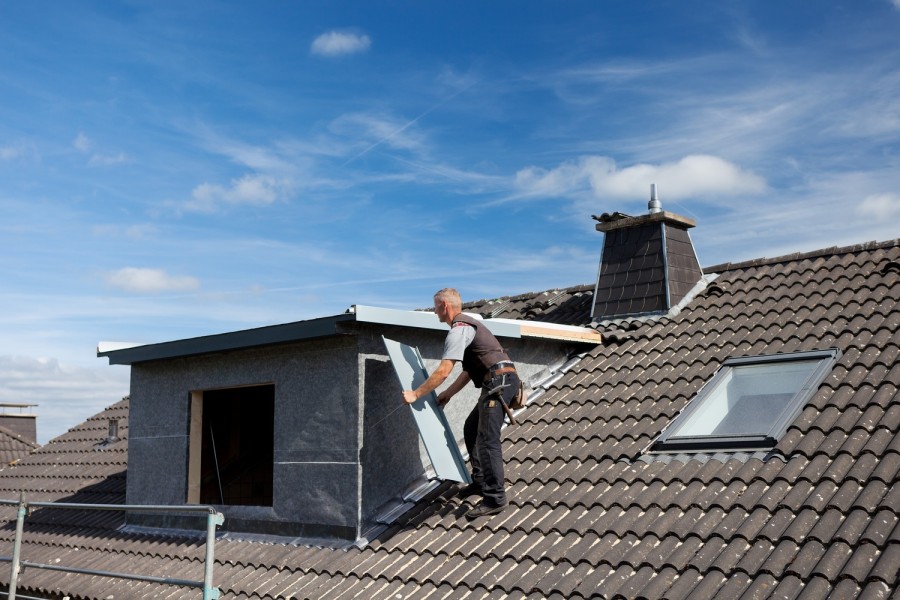A sturdy and well-maintained roof is essential for protecting your home from the elements, and in places like Roofing Rocky Hill CT, where the weather can be unpredictable, year-round roof maintenance becomes even more critical.
From the snowy winters to the humid summer months, proper care can prevent major problems down the line, saving you significant repair costs. In this article, we’ll explore how homeowners in Roofing Rocky Hill CT can keep their roofs in top condition year-round.
Understand the Local Climate
Roofing Rocky Hill CT, located in central Connecticut, experiences a full range of seasons, from frigid winters to warm, humid summers. Each season brings its challenges for your roof, and understanding these weather patterns is the first step in effective roof maintenance.
Winter: Snow, ice, and freezing temperatures can lead to issues like ice dams, roof leaks, and the accumulation of debris.
Spring: Melting snow and rain can exacerbate roof damage, and strong winds can dislodge shingles or cause debris to pile up.
Summer: Hot temperatures, intense sun exposure, and occasional thunderstorms can wear down shingles and lead to algae growth.
Fall: Falling leaves and branches can clog gutters and downspouts, and the damp conditions from the changing weather may encourage moss or algae growth.
Regular Inspections
One of the best ways to keep your roof in good condition is by performing regular inspections. These inspections can help you identify minor issues before they turn into major problems. Here’s a breakdown of what to look for:
Twice-Yearly Inspections: At the very least, inspect your roof twice a year—once in the spring and once in the fall. These seasons transition from extreme temperature conditions, and they’re the ideal times to catch potential problems.
After Major Storms: If Rocky Hill experiences strong storms, snow, or heavy winds, it’s a good idea to inspect your roof afterward to check for damage caused by these events.
During an inspection, you should look for:
Missing or Damaged Shingles: Shingles that are curling, cracked, or missing are vulnerable to leaks and should be replaced immediately.
Sagging Areas: A sagging roof can indicate a structural problem that needs professional attention.
Damaged Flashing: Flashing around chimneys, vents, and skylights can loosen or corrode, leading to leaks.
Moss, Algae, or Lichen Growth: In areas with high humidity, moss and algae can develop, damaging the roofing material and creating moisture issues underneath.
Clean Your Roof and Gutters Regularly
Cleaning is another vital aspect of roof maintenance. Whether it’s removing debris, leaves, or moss, keeping your roof and gutters clear can prevent damage caused by blocked water flow and moisture buildup.
Remove Debris: After storms, or regularly throughout the year, remove any leaves, twigs, or branches that have fallen on your roof. Not only does this prevent moisture buildup, but it also stops debris from clogging gutters or downspouts, which can lead to water damage.
Clean Gutters: Your gutters play a crucial role in channeling water away from your roof and foundation. If they become clogged with debris, they can overflow, causing water to pool on your roof or leak into your home. Clean gutters at least twice a year—more frequently if your home is surrounded by trees.
Remove Moss and Algae: If you notice moss or algae growth on your roof, it’s important to remove it quickly. Moss can hold moisture against the roofing material, leading to rot. You can use a moss removal solution or consult a professional for cleaning.
Insulate and Ventilate Your Attic
Proper attic insulation and ventilation play a major role in the longevity of your roof. Without adequate insulation, your attic can become too hot or too cold, which may affect the roofing materials above.
Prevent Ice Dams: In the winter, poor attic ventilation can cause heat to escape, leading to the melting of snow on your roof. This water can refreeze near the eaves, forming ice dams that can damage shingles and cause leaks. Ensuring your attic is properly ventilated and insulated helps regulate temperature and prevents this issue.
Proper Ventilation: Good attic ventilation allows moisture to escape, which reduces the risk of mold and mildew growth. It also helps maintain a consistent temperature in the attic, ensuring that your roof remains in good condition year-round.
Check for Air Leaks: Even the smallest air leaks can compromise your roof’s insulation and ventilation. Seal any gaps or cracks in the attic to prevent energy loss and roof damage.
Trim Trees and Remove Overhanging Branches
Roofing Rocky Hill CT, if your home is surrounded by trees, it’s important to regularly trim any branches that hang over your roof. Tree branches can scrape against the roofing material, causing abrasions, or they may break off during a storm, potentially damaging the roof.
Prevent Damage from Falling Branches: During winter storms or heavy winds, branches that hang too close to your roof can snap off and cause significant damage. Trimming them back helps minimize this risk.
Avoid Moss Growth: Overhanging branches also provide shade that can encourage moss or algae growth, which can deteriorate roofing materials.
Address Roof Leaks Promptly
Roof leaks can happen at any time, especially after a heavy storm or when materials age. If you notice water stains on your ceiling or in your attic, it’s crucial to address them quickly before they result in further damage.
Temporary Fixes: If you detect a leak before you can call a roofer, a temporary fix using a tarp or roofing cement may prevent further water infiltration.
Professional Repairs: Don’t wait too long to call a roofing professional if you spot a leak. Water can seep into the roof deck, insulation, and structural components, causing mold, rot, or even structural failure.
Hire a Professional Roof Contractor
Roofing Rocky Hill CT, or Roofing Branford CT, while DIY maintenance is important, there are times when it’s best to call in a professional. If you’re not comfortable on a ladder or if the roof damage is extensive, don’t hesitate to hire a licensed roofing contractor. They can provide thorough inspections, spot issues you might miss, and perform repairs safely and efficiently.
In Rocky Hill, where weather conditions can vary, a professional roofer can also offer advice on local-specific issues like snow load or wind resistance and ensure your roof is ready for any seasonal challenges.
Plan for Roof Replacement
Eventually, every roof will need to be replaced. Depending on the material, the average lifespan of a roof can range from 15 to 50 years. Keeping an eye on the condition of your roof will allow you to plan for a replacement before significant problems arise.
Conclusion
Maintaining your Roofing Rocky Hill CT requires a proactive approach. By regularly inspecting, cleaning, and addressing issues promptly, you can ensure that your roof remains in top condition despite the challenges posed by the region’s diverse climate.
Whether you’re dealing with the heavy snowfalls of winter or the humid summers, proper maintenance can extend the life of your roof and keep your home safe and dry for years to come. And when in doubt, don’t hesitate to reach out to a professional—keeping your roof in peak condition is an investment in your home’s safety and longevity.






